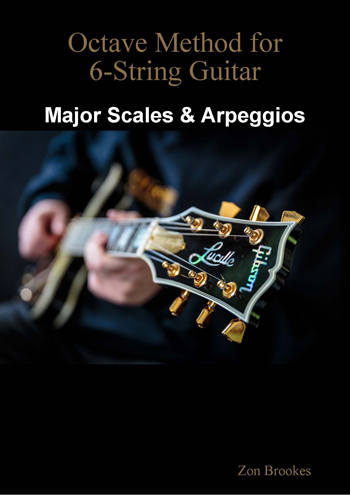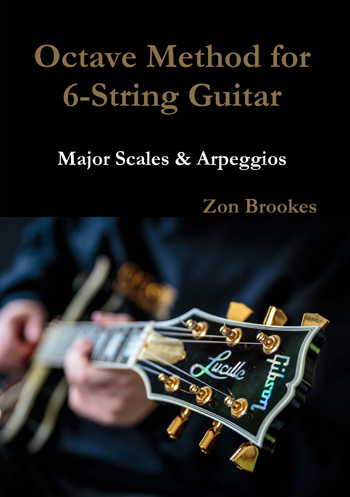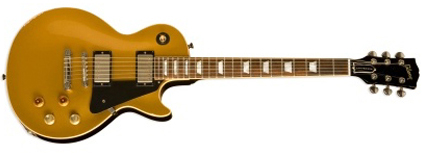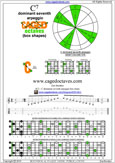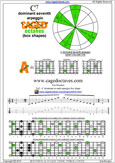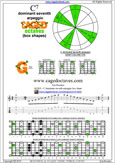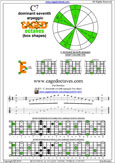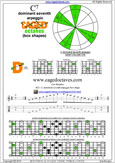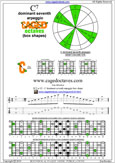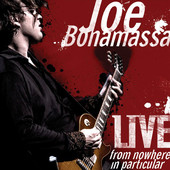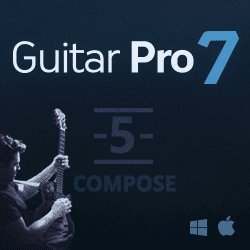Octave Method for 6-String Guitar : Major Scales & Arpeggios
eBook :Octave Method for Six String Guitar Fretboard navigation method for 6-string guitar based on an instrument specific modification of the CAGED guitar method, using linked octave shapes rather than open position chord shapes for ease and simplicity of use. |
Paperbook Book :Octave Method for 6-String Guitar Fretboard navigation method for 6-string guitar based on an instrument specific modification of the CAGED guitar method, using octave shapes rather than open position chord shapes for ease and simplicity of use. |
Joe Bonamassa
|
Joe Bonamassa is the accomplished blues/rock musician who uses target notes derived from the underlying dominant seventh arpeggio in his blues improvisations. |
|
|
|
|
Dominant seventh blues in G major using 6E4E1 chord shapes
The GP5 tab below shows the 6E4E1 (dominant seventh) chord shape being used to play a major blues in the key of G major - chord formulas and their corresponding note names are detailed in the table that follows.
Chord name |
Chord formula (intervals) and note names |
|||
1 |
3 |
5 |
b7 |
|
G7 |
G |
B |
D |
F |
C7 |
C |
E |
G |
Bb |
D7 |
D |
F# |
A |
C |
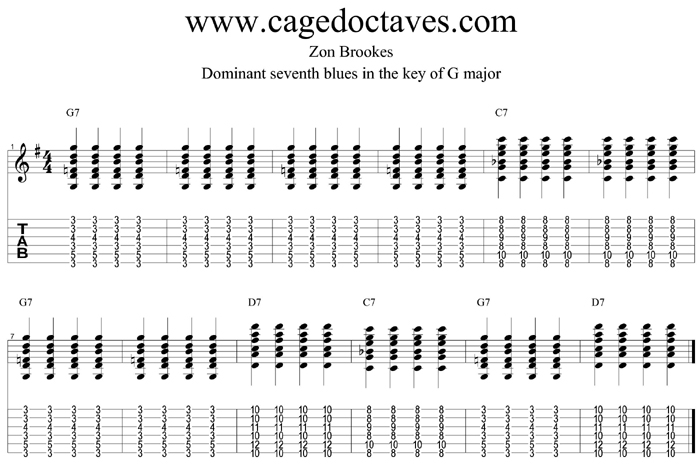
6Em4Em1 pentatonic minor box shape - Dominant seventh blues
Although the blues sequence above uses only dominant seventh chords - which are MAJOR in tonality - pentatonic minor based players such as Bonamassa use the corresponding MINOR PENTATONIC box shape. The table below shows the chord names and their corresponding minor pentatonic scales.
Chord name |
Minor pentatonic scale formula (intervals) and note names |
||||
1 |
b3 |
4 |
5 |
b7 |
|
G7 |
G |
Bb |
C |
D |
F |
C7 |
C |
Eb |
F |
G |
Bb |
D7 |
D |
F |
G |
A |
C |
The yellow highlighting on the table emphasizes the fact that the third should be MAJOR (to comply with the dominant seventh chord it is played over) however it is in fact MINOR - these notes are corrected in the improvisation by bending-up a semi-tone (half step) to the major third or a quarter-tone to the BLUES THIRD (which is neither major or minor in tonality)
A Guitar Pro 5 file is available via this link to practice the blues sequence shown in the tab that follows:-
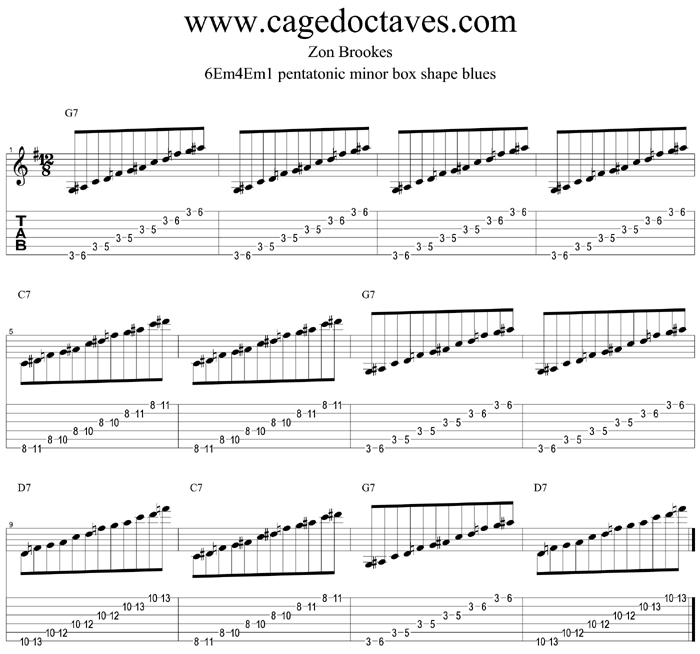
6E4E1 shape dominant seventh arpeggio blues - ASCENDING
To visualize the superimposed 6E4E1 dominant seventh arpeggio box shape over the top of the 6Em4Em1 pentatonic minor scale box shape the tab below shows the arpeggios following the blues chord sequence - the Guitar Pro 5 file is available via this link.
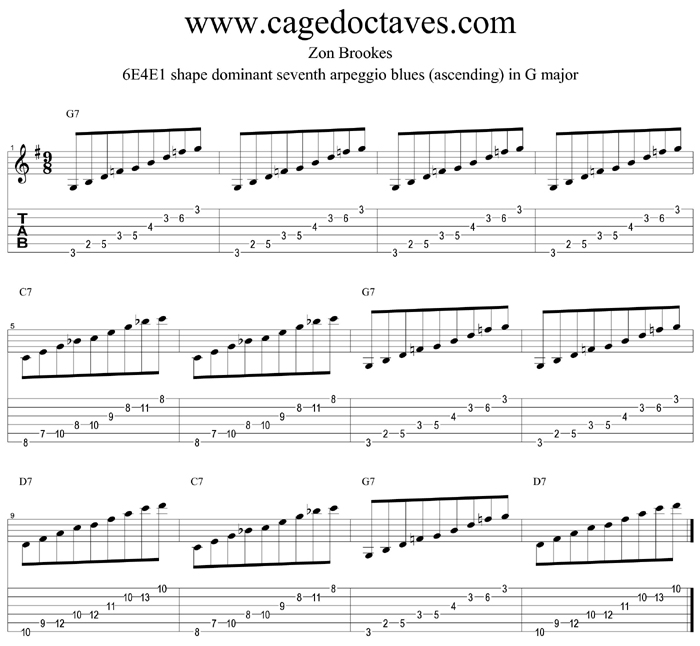
6E4E1 shape dominant seventh arpeggio blues - DESCENDING
A pot-hole that should be avoided is to only practice the arpeggio box shape in an ascending manner - as this is the opposite of how they are likely to be used in reality - hence the tab below shows them played in a descending fashion (Get the Guitar Pro 5 file via this link).
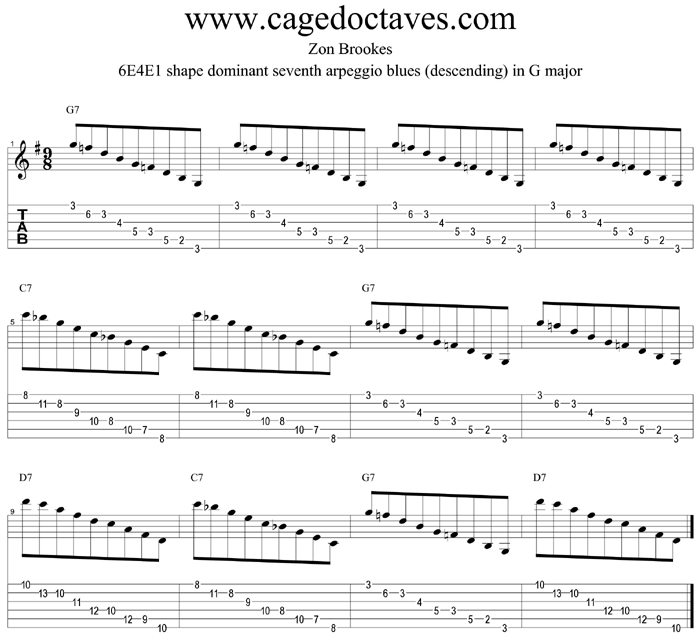
All of the dominant seventh arpeggio box shapes are detailed in the tabbed panel that follows for C7:-
C dominant seventh arpeggio box shapes
|
|||||
|
|
|||||
- 5C2
- 5A3
- 6G3G1
- 6E4E1
- 4D2
- 5C2 at 12
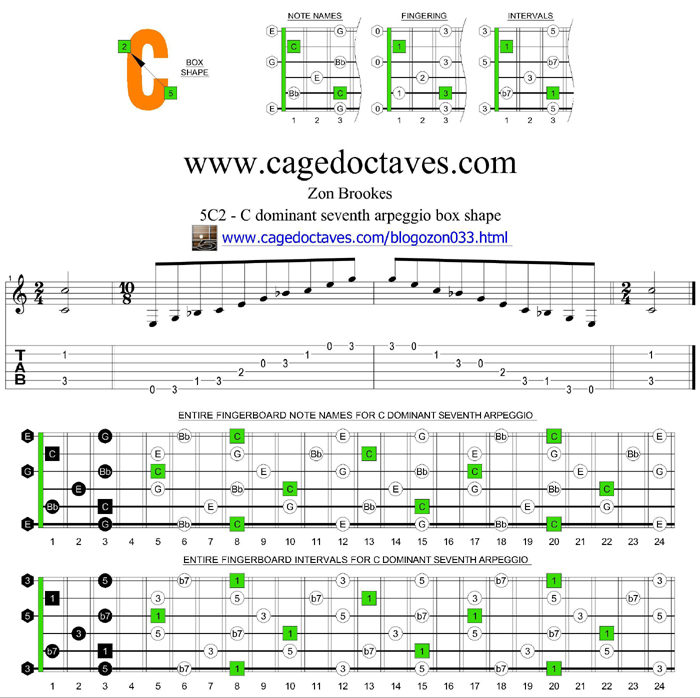
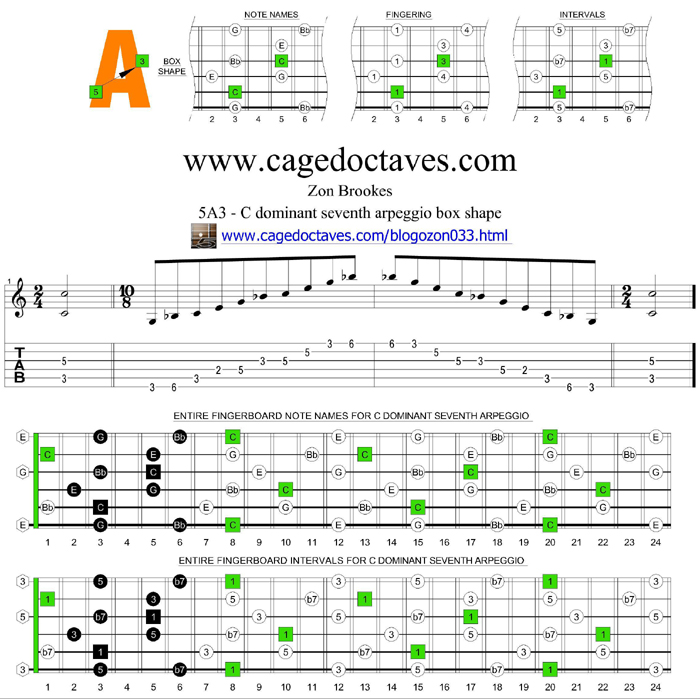
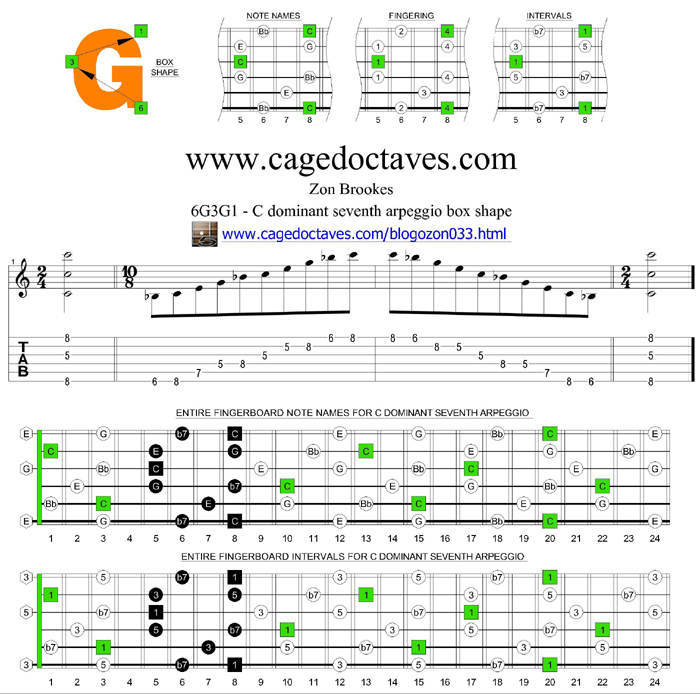
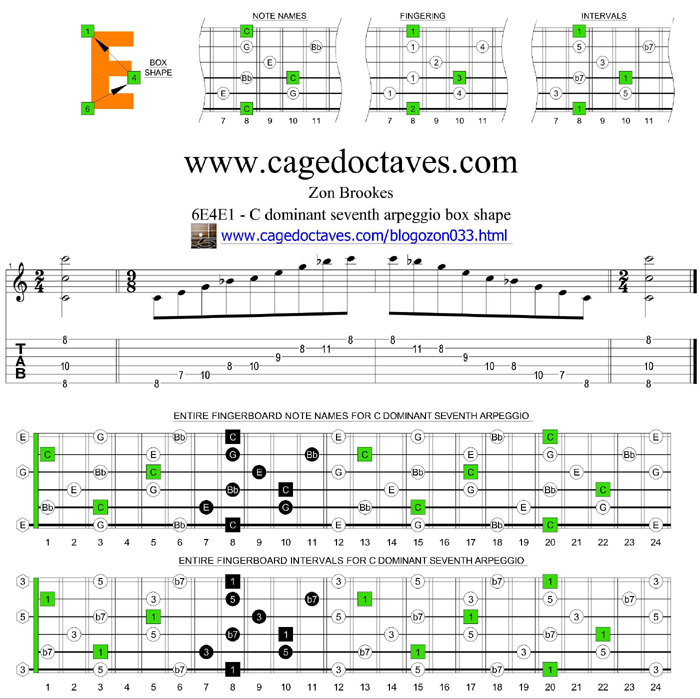
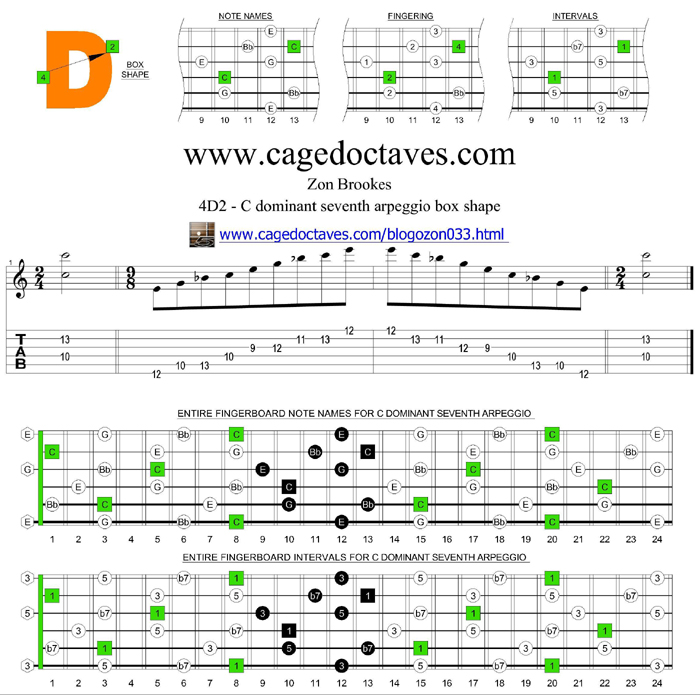
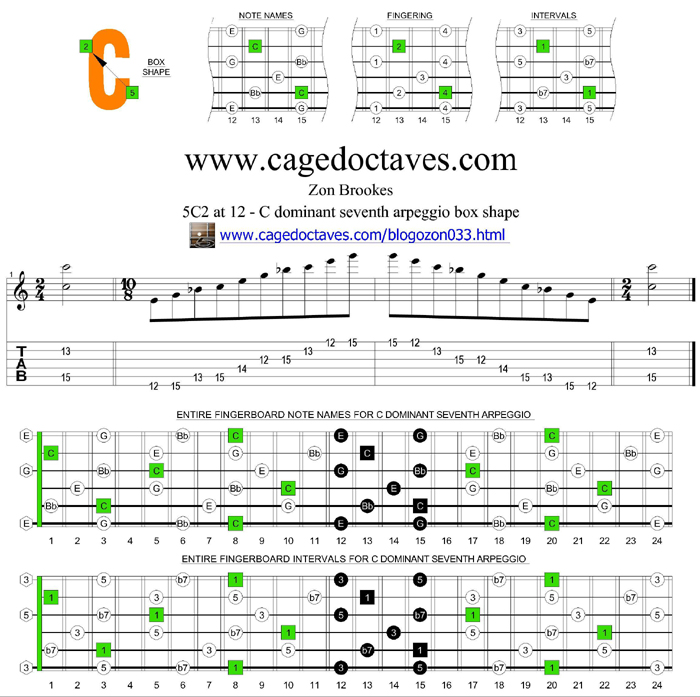
|
Sinner's Prayer ....Zon Brookes |


